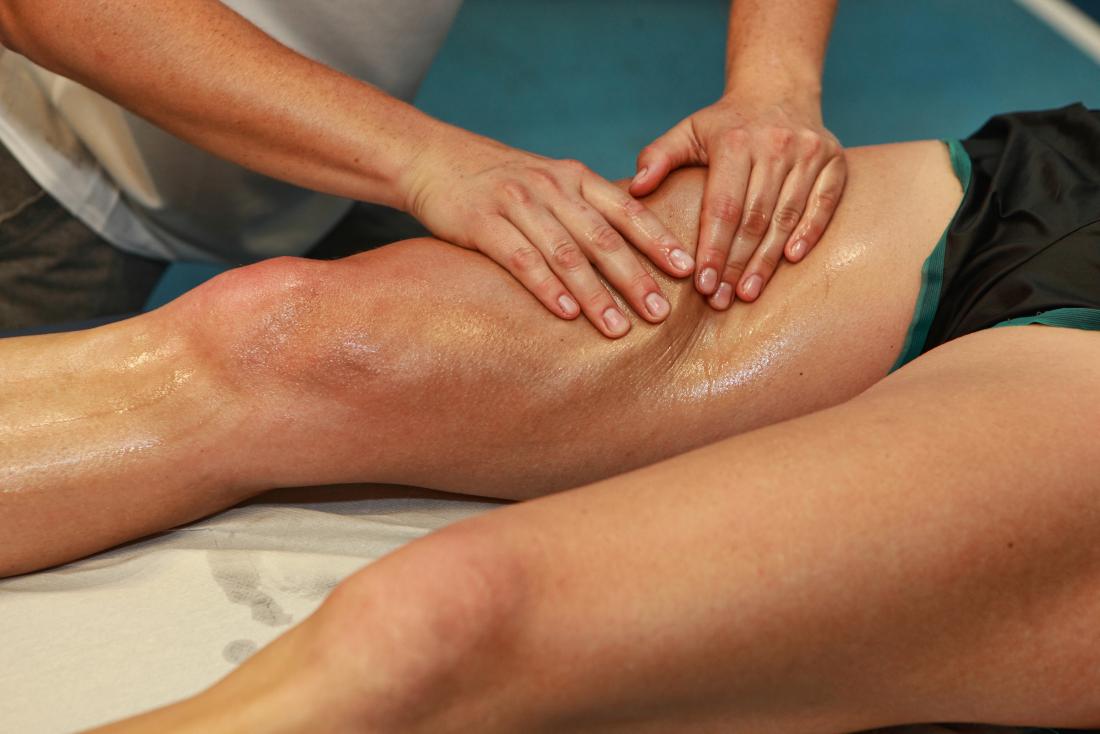More than 85 percent of females older than 21 have cellulite, but males rarely develop it. Cellulite can develop regardless of age or weight, though it becomes more common with increasing age. The medical term for it is gynoid lipodystrophy.
Invasive procedures, noninvasive techniques, certain products, and lifestyle changes may each reduce the appearance of cellulite.
However, the effects of procedures and tools are likely to be temporary. Results tend to last between a few days and 2 years.
This article describes remedies, exercises, and other methods that may reduce the appearance of cellulite. We also describe possible causes and the role of the diet.
Home remedies to reduce cellulite
While it may not be possible to completely eliminate cellulite, a few products and lifestyle changes may help reduce its appearance, including:
Staying hydrated

A person can drink water to help the skin maintain a plump appearance.
Skin cells, like the rest of the body’s cells, need water to function. Water also helps the skin maintain a plump appearance.
The American Council on Exercise (ACE) note that the layer of fat involved in cellulite retains water — dehydration can contribute to its dimpled appearance.
Everyone has different hydration needs, depending on factors such as:
- age
- gender
- health status
- activity levels
- pregnancy and breastfeeding
Some recommendations state that most healthy adult females need around 2.7 liters of water each day, including water from foods.
Maintaining a healthy weight
A person with any weight can get cellulite. However, having more fatty tissue in the body increases the likelihood of developing it.
Also, having extra weight can make cellulite more apparent, according to the American Academy of Dermatology (AAD).
For some people, losing weight gradually and consistently may help reduce the appearance of cellulite. However, losing a lot of weight, especially quickly, can lead to loose skin. This may make cellulite more visible.
Using creams or lotions
Many creams and lotions claim to reduce the appearance of cellulite, and a person can find a range in pharmacies, spas, and online stores.
Several compounds in these products may subtly minimize the appearance of cellulite when a person uses them daily, though none change the skin’s structure.
One of these compounds is caffeine, which can dehydrate fat cells and make cellulite less visible.
Also, according to the AAD, products with 0.3% retinol, a vitamin A derivative, may help thicken the skin, leading to a reduction in the appearance of cellulite. However, a person may have to use these products for 6 months or longer before seeing results.
Other common ingredients in cellulite creams may have similar effects and benefit skin health. These ingredients include:
- vitamins E and C
- escin
- forskolin
- sacred lotus
- carnitine
All skin products can cause an allergic reaction. It is essential to test new products on a small area of skin. If no reaction occurs within 48 hours, it may be safe to use the product on a larger area.
It is important to note that some creams contain aminophylline, which can cause anxiety, a racing heart, and breathing problems. People who use asthma inhalers should refrain from using any product with this ingredient.
Taking collagen peptides
Various manufacturers market supplements, including caffeine extract, grape seed extract, and gingko biloba, as cellulite-busters.
Some research does suggest that certain bioactive collagen peptide supplements may have this effect in some people.
In a 2015 study, researchers separated 105 female participants aged 24–50 with moderate cellulite into two groups. One group took 2.5 grams (g) of specific bioactive collagen peptides daily for 6 months. The other group took a placebo.
Participants in the supplement group who weighed within a healthy range experienced a reduction in cellulite and an increase in skin thickness.
Cellulite damages collagen bands within the skin. Taking supplementary collagen may help repair these and other structures and boost metabolism within dermal cells.
However, more research is needed to determine whether and to what extent collagen supplementation may reduce cellulite.
Trying massage

Massage may reduce the most advanced type of cellulite.
Certain devices deliver a deep tissue massage to help stretch underlying skin tissues, improve blood flow, and improve lymphatic drainage.
Some research indicates that manual and mechanical lymphatic drainage — which some consider a form of massage — may reduce the most advanced type of cellulite in as few as 2 weeks. However, the participants in this study also underwent cervical stimulation.
Several at-home devices claim to reduce cellulite by encouraging blood flow and tissue regeneration. These devices include dry brushes, mechanical massagers, and foam rollers, available for purchase online.
However, according to ACE, while devices, such as foam rollers, may help break up collagen adhesions and loosen tight connective tissues, they do not eliminate cellulite.
Exercising
The AAD list exercise among the handful of interventions that research suggests can reduce the appearance of cellulite.
Increasing the ratio of muscle to fat can make the skin firmer and smoother. As a result, any cellulite may be less apparent.
According to ACE, the best way to tackle cellulite is to increase physical activity levels so that the body is burning, rather than storing, excess fat.
Cardio exercises, such as the following, may help reduce the appearance of cellulite:
- jogging
- walking
- swimming
- cycling
- dancing
Strength training, especially exercises that target the thighs and glutes, may also help diminish the appearance of cellulite. Some experts recommend a daily cardio routine and two or three strength training sessions every week.
Good thigh exercises include:
Squats
To perform a squat:
- Stand with your feet slightly farther apart than hip-width.
- Turn your toes slightly outward, and rest your hands at your sides with the palms facing inward and your shoulders down and back.
- Stiffen the core muscles to brace the spine. With your chest up and out, tilt your head up slightly, and slowly shift the body’s weight onto the heels.
- Keeping your back straight, slowly lower your hips until the thighs are almost parallel with the floor, ensuring that your knees stay over the second toe.
- Keeping your head up, the core stiff, and the back flat, exhale and rise. Extend your hips and knees by pushing through the heels.
A beginner might aim for doing three sets of 12–15 squats each over a week.
Lunges
To perform a lunge:
- Stand with both feet together.
- Step one foot forward and slowly bend both knees, dropping the back knee nearly to the floor, while keeping the front knee behind the front toes.
- During this bend, ensure that your torso is straight and your core muscles are tight.
- Once both knees have reached a 90° angle, push through the front foot to come to a standing position.
- Repeat with the opposite leg in front.
One set of lunges might involve 10–20 repetitions per leg. A person could aim to complete two to four sets per week.
For variation, try a reverse lunge, which involves stepping one foot backward instead of forward in the first step.
Does the diet affect cellulite?
Research suggests that nutritional factors may play a role in cellulite development and severity.
For example, according to a 2016 study, diets high in fats, salt, and carbohydrates may contribute to cellulite because fats can increase inflammation, salts can encourage water retention, and carbs can help break down collagen.
A high intake of fat, salt, or carbs can also help generate more subcutaneous fat cells.
The study also noted that several nutrients might help reduce cellulite, including:
- vitamins A, C, and D
- zinc
- polyphenols, terpenoids, and silicon in fruits and vegetables
- anti-inflammatory mono and polyunsaturated fats
However, confirming the effects of the diet on cellulite will require further research.
Possible causes
 High levels of stress may contribute to the development of cellulite.
High levels of stress may contribute to the development of cellulite.Many factors can contribute to the development and severity of cellulite, including:
- smoking
- a high alcohol intake
- wearing tight clothes
- an unbalanced diet
- high levels of stress
- long term inflammation
- increased levels of fatty tissue
- medications that cause water retention
- being immobile for long periods
- disrupted drainage within the lymphatic system
- reduced circulation
- thinning of the skin
Several other factors can increase the risk of developing cellulite, including:
- older age
- a family history of cellulite
- a paler skin tone
- hormonal imbalance
- kidney problems
Cellulite* generally occurs when septae tighten. Septae are thick bands of collagen that connect the skin to muscle and hold back subcutaneous fat in the dermis.
When these bands tighten, they pull at the skin and allow underlying fat cells to rise upward. This creates a dimpling of the skin, which may resemble an orange peel, cottage cheese, or quilted stitching.
In females, collagen bands tend to be honeycomb-shaped, while those of males tend to have crossed or horizontal patterns. This may explain why cellulite is common in females and rare in males.
Summary
A vast majority of adult females have cellulite, and it often develops on the thighs.
Cellulite does not harm health, but some people wish to reduce its appearance.
A variety of lifestyle changes and home remedies may temporarily have this effect, including:
- staying hydrated
- increasing levels of exercise, including cardio and strength training
- some collagen supplements
- some cellulite creams and gels
Results are often subtle, and they may take a long time to appear.
Some invasive and noninvasive procedures can reduce cellulite* for more extended periods. They may involve radiofrequency, laser therapy, suction, or a combination of these techniques.